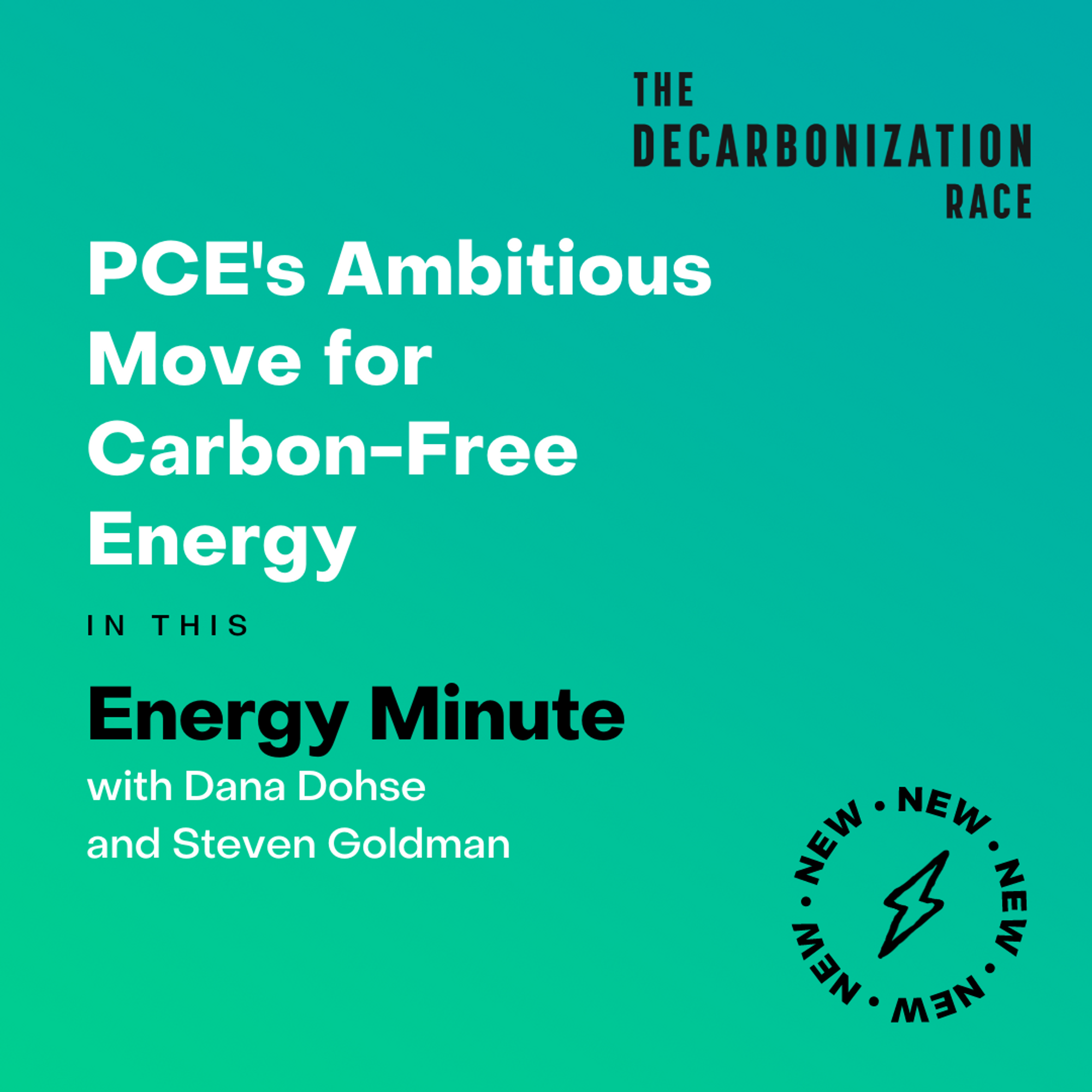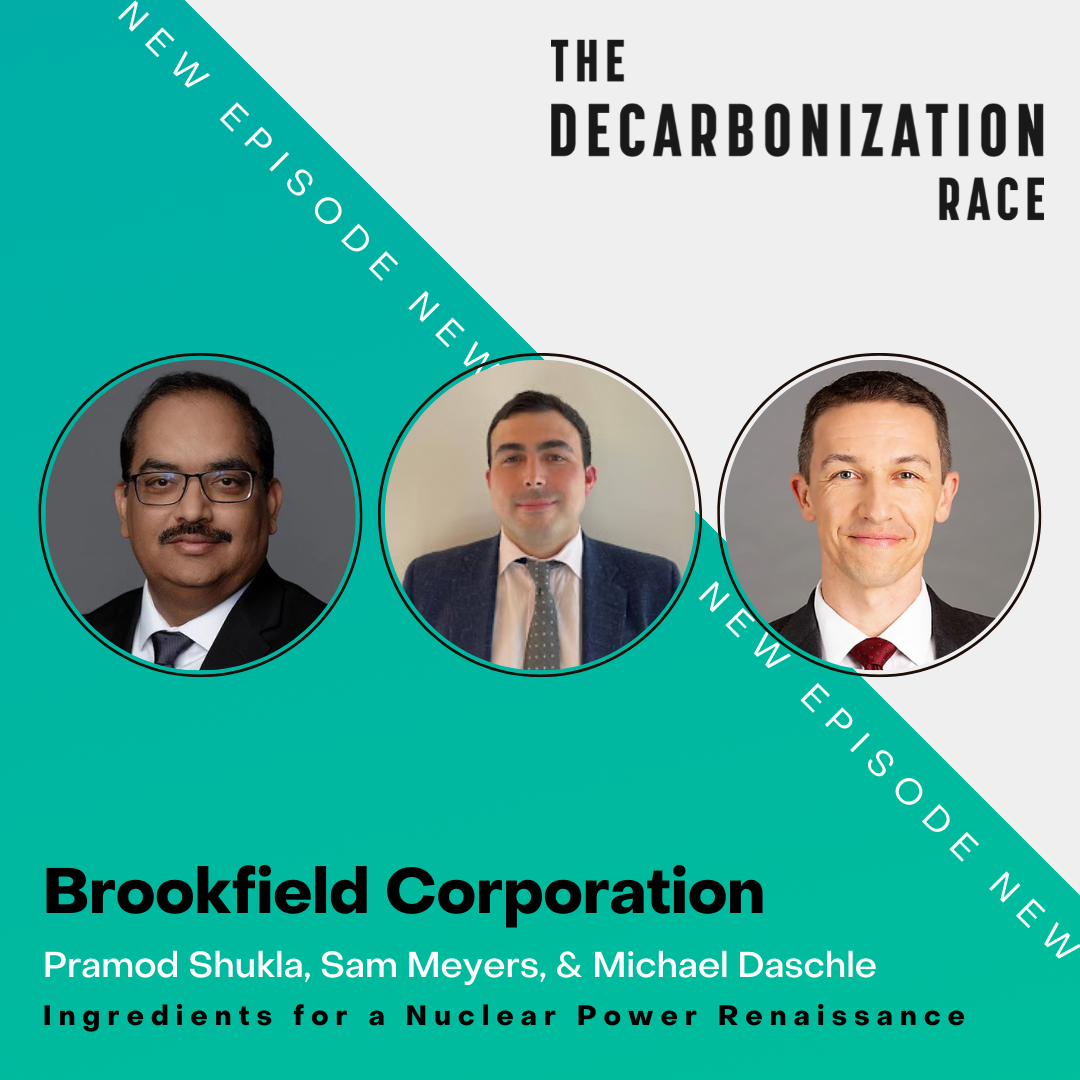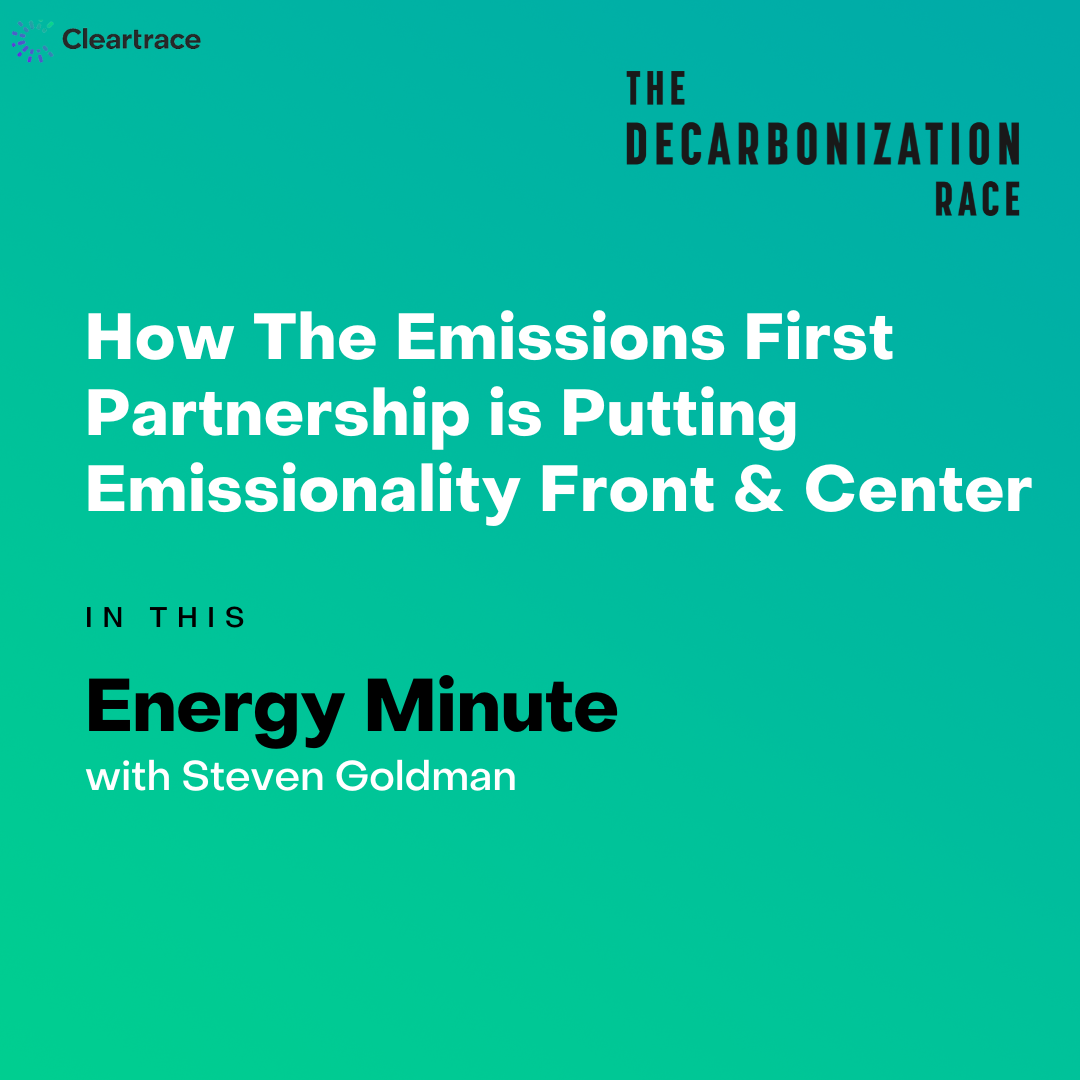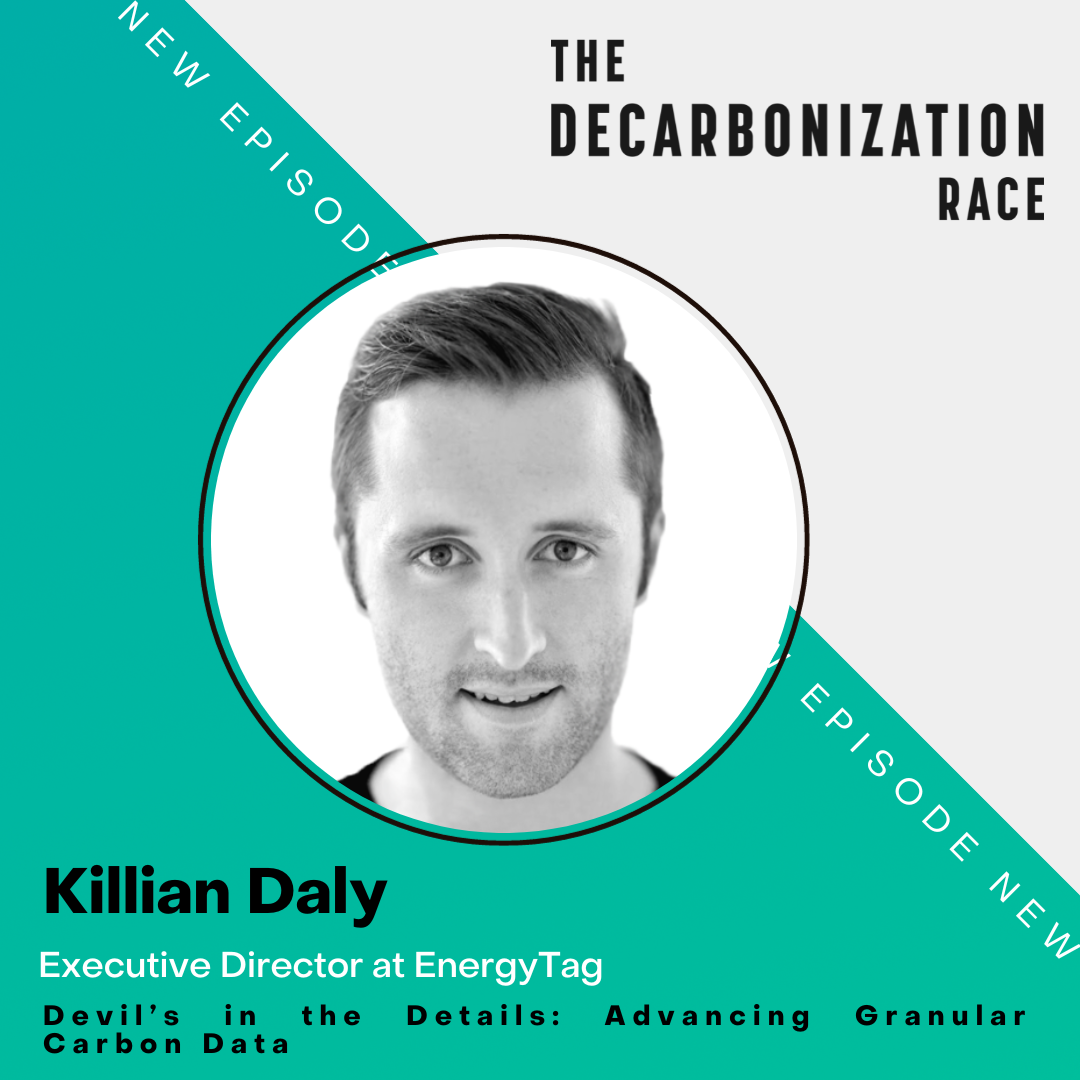Energy Minute: Peninsula Clean Energy’s Ambitious Pursuit of 24/7 Carbon-Free Energy
In this Energy Minute, Dana and Steven jump into how California utility Peninsula Clean Energy decided to reach for a more ambitious strategy - to provide 100% renewable energy matched every hour, the first U.S. energy supplier to do so - and how it plans to continue to advance the strategy further in years to come.

In 2016, Peninsula Clean Energy made an ambitious move to supply its customers with 100% renewable energy. As of 2021, it met its goal with a mix of renewable and carbon-free energy, including large hydropower and nuclear power at a lower price than customers were paying for power through Pacific Gas & Electric.
In this Energy Minute, Dana and Steven jump into how Peninsula Clean Energy then decided to reach for a more ambitious strategy – to provide 100% renewable energy matched every hour, the first U.S. energy supplier to do so – how that strategy is progressing towards its 2025 goal, and how it plans to continue to advance the strategy further in years to come.
Listen in for:
- PCE has already procured enough solar, wind, geothermal and hydropower resources to cover 75% of its 24/7 strategy by 2025, and will procure additional capacity to reach 99% by the end of 2025. This is providing a blueprint for other utilities to decarbonize, evaluate their modeling, and dispatch storage.
- California has been increasing targets to add energy storage to their mix, which are typically arriving in the form of battery-based storage systems designed to run for as much as four hours at a time, helping fill in some energy gaps.
- PCE is envisioning eventually adding a broader range of technologies to its strategy, including offshore wind and seasonal energy storage.
Resources
Peninsula Clean Energy’s Strategic Plan: https://www.peninsulacleanenergy.com/strategy/
PCE’s original white paper sharing its approach to 100% carbon-free energy: http://peninsulacleanenergy.com/wp-content/uploads/2021/11/Whitepaper-OUR-PATH-TO-247-RENEWABLE-ENERGY-BY-2025.pdf
PCE’s 2023 white paper sharing how its approach was updated to a 24/7 model: https://www.peninsulacleanenergy.com/wp-content/uploads/2023/01/24-7-white-paper-2023.pdf
Transcript
Dana Dohse: Welcome to this week’s Energy Minute, brought to you by Cleartrace. I’m Dana Dohse.
Steven Goldman: And I’m Steve Goldman.
Dana Dohse: On this Energy Minute, we’re going to take a quick look at the very ambitious move by a California Utility, Peninsula Clean Energy, to supply its customers with 24/7 carbon-free energy by 2025.
Steven Goldman: Peninsula Clean Energy, or PCE, is a community choice aggregator. It’s one of a group of retailers, or what are called load serving entities, that were looking to offer an alternative to the vertically integrated utilities dominant in the state that the majority of customers get their power from.
Dana Dohse: In 2016, PCE set an unprecedented goal for this type of organization, to procure 100% renewable energy by 2025. And as of 2021, they met their goal with a mix of renewable and carbon-free energy, including large hydro power and nuclear power, at a lower price than customers were paying for power through Pacific Gas and Electric.
Steven Goldman: But as they examined their impacts through a 24/7 lens, and understood the impacts of the hours they were drawing power from the local grid mix, they realized that a goal of 100% renewable energy wouldn’t necessarily drive the long range transformation that is needed to achieve a fully decarbonized grid.
Dana Dohse: Exactly. And that’s why in 2017, they set a higher goal, to deliver 100% renewable energy on a 24/7 basis by 2025. And in December of 2021, they put out a white paper laying out the strategy they would take to deliver 24/7 renewable energy. And then in January of this year, they put out a new white paper illustrating how their strategy was developing, and what progress they were making towards their goal.
Steven Goldman: Which is what we’re discussing today: That progress.
Dana Dohse: Right. So let’s dive into it. What exactly are they saying here?
Steven Goldman: It’s a really incredible story. So PCE has sat down, and at first they were trying to say, “We’re going to source 100% renewable energy for our customers on an annual basis.” And then as they dug into it, and understood at an hourly level how they were or weren’t matching renewable energy to the demand from their customers, they were realizing that those gaps were actually more significant than they originally thought, and shifted goals to actually procuring on a 24/7 renewable energy basis. And they’re actually differentiating between renewables and carbon free energy in this case, because as an entity, their board decided they didn’t want to accept nuclear power as part of the mix. So it is completely focused on 100%, 24/7 renewable energy.
Dana Dohse: Right. So that’s a key difference from a lot of the 24/7 CFE discussion that happens with the likes of Google and others pursuing that goal.
Steven Goldman: Exactly. It’s interesting. So when pouring through the report, there’s really a fundamental difference between the types of portfolios you’d have to build for each approach. So an annual match portfolio is designed to have no net excess supply, meaning you source what you think you’re going to need, but making sure that you’re not going to be oversupplying. So you’re not going out and procuring excessive amounts of megawatt hours of renewable energy to try and meet every single hour. You’re trying to meet a load profile that you think is going to happen, and then anything that you haven’t procured, you’re going to fill in the gaps with grid power.
On a 24/7 renewable energy basis, what they found is that you’ll be procuring a significant amount of excess supply, but you’re not going to have any hours, or you’re going to have very minimal hours that you need to draw power from the grid. From a volumetric basis, when you’re saying, “Okay, I need, say, 3,000 megawatt hours,” that’s a ridiculously small amount for a local grid, but just for the sake of argument, then you procure that 3,000 megawatt hours, and you ensure that you have that, and anything additional that you’re going to need, you’re going to pull from the grid.
Now, as you move into an hourly profile and you start reaching for higher levels of renewables for that profile, to a 90%, a 95%, a 99% renewable energy target, what they were finding is, as you moved up that scale towards 100% on a 24/7 basis, that they needed more and more oversupply to ensure that they were able to close that gap. So from the report, I think when you hit 90%, you had to procure 114% of your projected energy. As you got to 95%, you had to procure 126% of your projected energy. 99%, I think it was around 146%. So it’s scaling up the amount of access capacity that you need, but it also means that as a utility, they could have RECs, and what they call in California a resource adequacy capacity, that they could then sell back to the grid.
Dana Dohse: Right. And I think it was even the last 1% required 34% more supply, which brought them to a really important takeaway of the entire thing, which was that that last 1% was a case of diminishing returns. And they started looking at it and saying, “Okay, maybe it’s 99% match on an hourly basis that we need to pursue,” because of that diminishing return, and also because the reality of the 1% is that there’s probably marginal carbon impact in there anyways. And that’s still a huge improvement from what the standards are today.
Steven Goldman: Exactly. I think we’ve had some discussions on the podcasts, like the interview with Chris Pennington. He was talking about procuring for Iron Mountain’s data centers, and 24/7 CFE for their data centers, that they’ve been floating in between, I think, 60% and 95%, depending on where in their load profile, where in the season they are.
And what’s intriguing here is, this is the flip side of this. They’re not a demand side customer who’s trying to procure energy. This is an energy retailer, a CCA in California that’s trying to have 24/7 renewable energy supply to sell to customers. So they’re trying to square the optimal mix of grid impacts, of cost to customer, because they’re also trying to still be a cost effective alternative to the local utility, which is PG&E, but also to meet their carbon emission goals. And that 99% is what they found in the new white paper is looking like the sweet spot that they’ve been able to reach, where you’re squaring each of those different concerns.
Dana Dohse: So you brought up two things I want to dive into a little bit more. The first is the cost. The cost was a really interesting takeaway for me, because essentially what they’re saying is, they’re modeling out, “We’re going to basically resell that excess supply back in the form of RECs,” and they assumed that they could do about 75% resale of that excess supply. Obviously there’s some long-term caveats as people develop different renewable energy goals, that number could go down, but for the sake of argument and for sake of the model, that’s what they assumed.
So what they found was with the 99% match we’re talking about, it was only going to cost them 2% more than what they were paying today, which is incredible. I think if we think about the prevailing discussions that happen around 24/7 renewable, 24/7 CFE, it’s incredibly unaffordable. And to me, that just jumped off the page as one of the big takeaways, for whether you’re a supplier looking to green your supply, or a demand side customer, is that it really is a lot more affordable than you might think.
Steven Goldman: Well, and the other thing is, whether you’re on the supply or the demand side, you’re trying to offer a product, and that product has to be to some degree affordable to your customers. Now, California Power has gone through its stages of going from inexpensive, when you have heavy renewable supply, to being wildly inexpensive when gas prices are high, even if the lowest marginal cost energy is renewables, but you have to balance that with flexible generation like gas, or batteries, or other resources like that. You can still end up with very high power prices as a result. And PCE, as a retailer, is trying to come in at a price point that’s staying competitive or coming in lower than the utilities they’re competing against. So they have a vested interest in putting together the optimal mix that’s going to still provide a competitive price.
What’s interesting is the diminishing returns there on trying to meet that last 1%, you go from a 99% mix, where it’s only about a 2% cost increase relative to their baseline power offering. When you try to get over the line to that last 1%, what Dana was saying before, around it’s a jump of about 34% excess capacity you need to reach that, that results in about a 10% increase in portfolio costs for them. So to go from 99% to 100%, you’re talking about a 10% jump in power costs. So it becomes a question of, is that necessarily worth it for those impacts?
And what was interesting in the report was also that they’re talking about an increasing amount of the power that they’re sourcing in order to provide the equivalent of baseload within that mix of their supply stack is coming from wind and from geothermal, and the geothermal still carries a certain amount of trace carbon with it. So being able to say with absolute certainty that it’s 100% renewable and zero carbon is not necessarily even possible.
Dana Dohse: So another interesting finding that kind of jumped out to me is around the emissions reduction. So the report found that during this scenario, there were a couple of benefits in this area. First is that it really reduces emissions from the dirtiest plants. So in California, that’s methane plants during the evening, because they tend to be the least efficient and the dirtiest on the system. And so what this does is it actually is sending a market signal saying, “We need less methane, because we’re looking at renewables during that time.” And that’s a really important thing, when you start to think about the contrast between annual matching, and a more precise hourly goal. Because in an annual system, you’re only procuring enough to cover your average on an annual basis, and you’re not getting those signals into the market that, “We need less methane.” And that’s huge, because that’s what we’re really trying to do, is reduce the dirtiest emissions.
Steven Goldman: The natural gas plants you’re talking about, especially the ones for peaking, are generally, they’re the least used. They’re generally running 5% to 10% of the time, the 5% to 10% of the year where you have the highest demand, whether that’s in the wintertime or the summertime, and those tend to be also not terribly efficient. And so you’re ending up burning through gas, you’re cycling it up and down to follow a load, but you’re doing so in one of the least efficient ways possible.
Now, California’s been putting in place increasing targets to add energy storage to their mix, and it’s typically coming in with battery storage systems that can run for, I think, as much as four hours at a run. And those are helping fill in some of the gaps. But again, it’s the market signal, is the critical piece here, to showing that you can build a supply stack that doesn’t require as much use or any use of those peakers.
The conclusions coming out of this were really fascinating. I mean, a few other things I would offer up, as we mentioned, the 99%, 24/7 portfolio that they’re saying is probably the right fit is characterized by a significant amount of excess supply, especially at the higher levels of hourly matching. But that’s there to ensure that customer demand is being met, even in the hardest to serve hours, so cloudy, windless days. If the sun’s not shining enough, then you have enough solar across the region that it’s feeding energy in. But what they don’t have yet is seasonal storage, because it’s generally not seen as a cost effective mode of energy storage yet, the mediums that they have available right now. So even with a supply stack right now that’s, I think around 9% energy storage built into that, they’re still building a portfolio that can cover the spread, that can cover 24/7, even with a relatively small amount of storage.
What’s interesting also is there’s upsides and downsides of this kind of approach. The upside is, you’re reducing overall net peak demand, and giving the signal that Dana was talking about, to there’s less of a need for natural gas on the grid, because you’re meeting the peak needs with that excess capacity of solar, of wind, of geothermal, of hydro. And what you’re also doing in that process is by bringing a certain amount of battery storage into the mix, you’re also capturing solar over-generation, and using the batteries at peak times to smooth the curve, so that normally when solar is ramping down, that’s usually the same time of day when power demands are ramping up, and so you have a ramping need. What the batteries are doing is smoothing that out, and injecting power so that you’re not having to signal for gas peakers to come online to provide that excess.
Now, the downside of that is that you could end up with potential for renewables curtailment, like if you have too much supply in the market, and too much power that’s feeding in, even through over-generation, regardless of whether or not you can sell the RECs, you could be in a position where you have to curtail some of that, because you’re going to overload the grid in the places where they’re generating. You could end up with transmission getting overloaded, and you have nowhere to send the power. So there are some challenges that are tied up in this strategy, but still it’s a fascinating fact that they’re already moving towards fulfilling this by 2025. The report said that, I think it’s around … I have to double check my figures, but I think over 75% of it is already procured for 2025, and they’re expecting to meet the remaining amount to get them to 99% by the end of that year.
Dana Dohse: It’s incredible. I mean, it really is providing a blueprint for other utilities to decarbonize, to really think about the way that they’re using their modeling, the way that they’re thinking about dispatching storage, and really calculating the marginal impact on the grid. It’s pretty trailblazing.
Steven Goldman: Absolutely. And they even noted in the report that there’s still technological advances that are going to help make this easier in the future. They had a really long-range view. They’re already looking ahead to when offshore wind is going to start joining the California grid. They’re looking ahead to when non-lithium based energy storage is going to start becoming a part of the mix, and that all of that can help with managing the curve as well. And so they’re looking ahead beyond 2025 to say, “We’re going to keep refining that supply stack. We’re going to keep refining the ways we work with customers on demand in order to optimize this portfolio as much as possible.” It’s just fascinating.
Dana Dohse: Absolutely. And it makes me think back to our episode we did in season one around the IEA report, which is kind of a similar trend, looking at a little bit more variation and nuance to these 24/7 goals, and really thinking about, how is this achievable? What does this actually look like from a cost perspective? And how do we take something that really makes people put their hands up and dismiss it right at first blush, which was the original narrative around 24/7, and saying, “Okay, maybe there’s some middle ground, maybe there’s this 90%, 95%, 99% match that can be this big sweet spot of cost and carbon.” And I love the way that this is advancing the conversation and getting people involved in the conversation who were previously not.
Steven Goldman: And not to bring it back to our wheelhouse too obviously, but it raises the importance on having granular data. Because without it, you can’t get to this level of analysis. You can’t understand how the supply stack, how you’re meeting the needs hour by hour, in order to optimize and to hone your portfolio this way. So it’s really incredible. I come from the energy storage world originally, and typically what we’ve seen is people bringing batteries, people bringing pumped hydro onto the grid. People who are procuring different assets to do different jobs on the grid are usually optimizing for revenue and/or cost, and they’re optimizing for the grid impacts that need to happen, but they’re not necessarily optimizing for emissions reductions. And what we’re seeing here is, it is possible to find a near perfect path where you are actually optimizing for carbon in that mix as well. It’s really tremendous, and I think we’re going to see a lot more of that moving forward.
Dana Dohse: Thanks for joining us for this week’s Energy Minute. For more of the latest news in sustainability and decarbonization, visit cleartrace.io.










